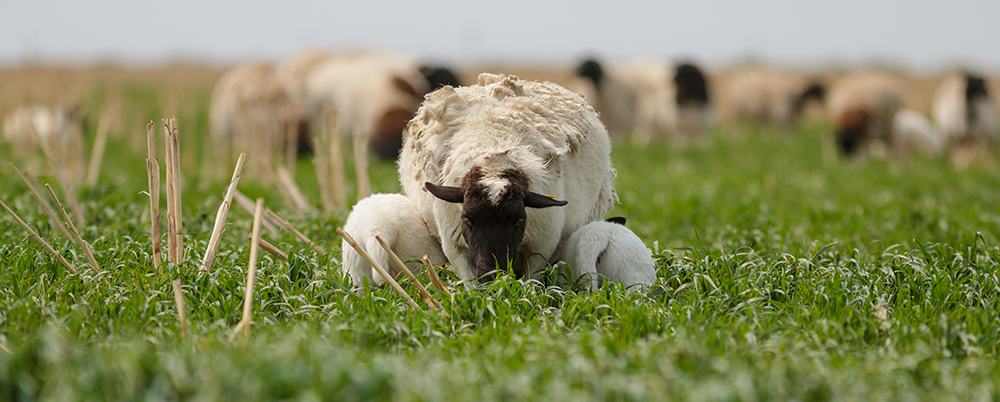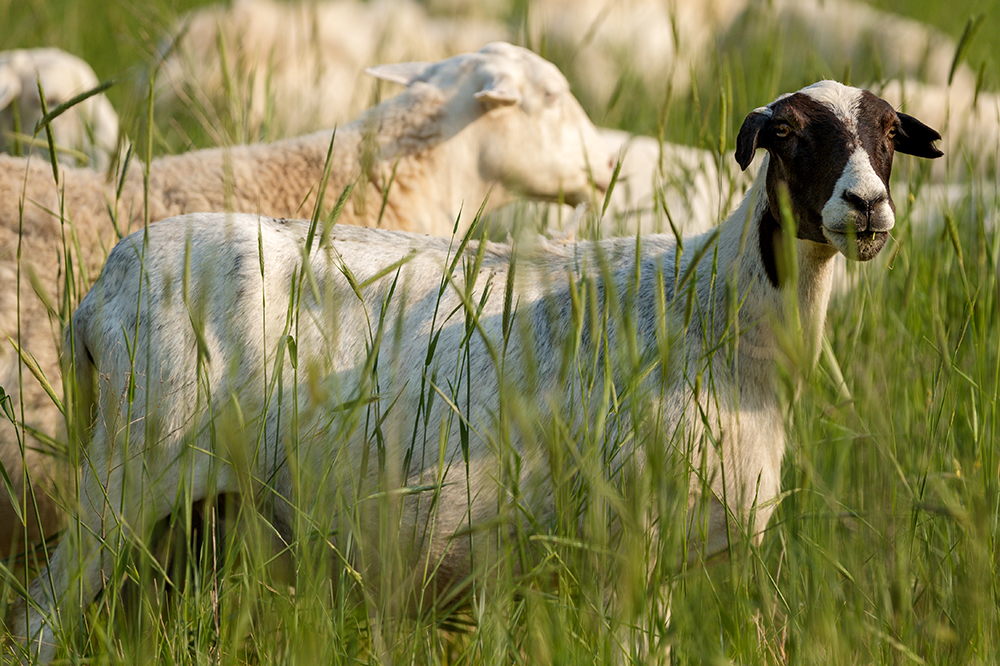5 Questions to Answer Before Doubling Your Small-Ruminant Breeding Seasons
Ranchers with both sheep and goats can market four combined lamb-and-kid crops annually – with proper planning.
Twice is nice when it comes to lamb and kid crops. With sheep and goats both having about a five-month gestation period, ranchers can feasibly raise two crops of small ruminants yearly.
But doubling the saleable offspring also means doubling the planning to ensure your herd health, conception rates and marketing are managed well enough to potentially double your ranch’s small-ruminant income. According to Kevin Lynch, a Noble research associate with more than three decades of sheep experience, ranchers should keep these five questions in mind when planning for two sheep- and goat-breeding seasons a year.

1. Are my females in good body condition?
Whether you’re raising sheep, goats or both, small-ruminant females need to be in good body condition to conceive and have multiples twice a year. This is especially important because the females will be lactating during the breeding season, which means their nutritional demands will be higher at the time when they’re trying to conceive — hopefully with multiples to increase income.
“Body condition score is imperative. Sheep and goats cycle a little thinner than cows, but you want multiple births. You’re really hoping for twins,” Lynch says.
He says ranchers can likely be profitable if they average a lamb or kid crop of more than 125% twice a year. Monitoring body condition optimizes the number of offspring the females produce annually.
Like cattle, sheep and goats’ body condition is evaluated through a scoring system. Unlike cattle, it is a five-point scale, not a 9-point scale. Lynch says small-ruminant females expected to give birth twice in one year shouldn’t dip below a body condition score (BCS) 3. He notes that maintaining a proper BCS is much easier if ranchers rotate their livestock through a well-managed rotational grazing system, bolstering herd health.

2. Are my ewes and does (nannies) healthy enough for two pregnancies each year?
Lynch notes that much of herd health comes down to proper management and hardy genetics. He recommends ranchers raising small ruminants use a rotational grazing system. Rotational grazing not only provides the animals with high-quality, nutrient-rich forage, but it also helps reduce the parasitic load. The added parasite control comes from animals not ingesting parasites left on forages through the droppings of other infected animals.
Even with access to quality grasses, Lynch recommends providing ewes and does (nannies) with a mineral supplement to ensure the herd gets the proper vitamins and minerals. Additionally, he vaccinates his herd, but still credits a large portion of herd health to adequate care and management.
“If you have your mineral and a good grazing plan, most of the time, you won’t have any problems,” Lynch says.

3. What marketing opportunities are available in my area?
Knowing how you would market a second crop of lambs or kids is an integral part of the equation. Lynch notes that fall and spring lambs often are ready to be harvested during certain religious holidays and festivals that traditionally serve lamb, which adds value to offspring born during those windows. But, he also stresses the importance of ranchers understanding the markets available in their area.
Can you sell your lambs or kids directly to the consumer, through a local sale barn, or after harvest, hanging on the rail? Lynch says some ranchers can even sell finished animals on-the-hoof by live weight to local packers who then harvest the animals and sell the meat at retail.
It’s also important to note the demand for certain animals and any discounts given at your chosen market. Today, Lynch says a growing demand for mutton has kickstarted a fat nanny and fat ewe cull market, adding another way to generate income. Additionally, the demand for lamb cuts continues to increase and stretch beyond the traditional leg and rack of lamb.
“They have really grown the market,” Lynch says.

4. When will I turn the rams and billies (bucks) out with my females?
While spring and fall lambing/kidding are the most popular choices for ranchers wanting to capitalize on two lamb and/or kid crops a year, Lynch notes that a rancher’s schedule should be heavily weighted by his or her available markets.
Although Noble’s commercial herds only lamb or kid once a year, we do have both spring- and fall-lambing/kidding herds that are managed separately. For fall births, rams and billies are turned out with females over the summer. For spring-born offspring, the males are turned out in November.
Regardless of when ranchers decide to breed and birth their respective herds, Lynch recommends having the lambs and kids arrive in a short, tight window. That means short breeding seasons.
“I would do a 45-day period,” he says.

5. Do I have the best type of sheep and/or goats for my operation?
When ranchers expect more out of their stock, such as two breeding seasons a year, their herd must be optimized to their environment. Lynch notes that certain breeds of sheep and goats have characteristics that make them well-suited for such a commercial ranching operation.
For example, Kiko, Spanish and Savanna goats tend to be more parasitic-resistant than some of their peers. While they may not be the most heavily muscled goats, their added hardiness often pays off.
Another example is hair sheep, or sheep which naturally shed and don’t need to be shorn. Managing hair sheep herds is much easier without the added hassle of shearing, and often ranchers don’t have to dock their tails, either. Katahdin, St. Croix and Dorper are all examples of hardy hair sheep breeds. Still, some traditionally wooled breeds thrive in commercial operations, such as Texel and Cheviot sheep.
Most importantly, ranchers should choose livestock that can rise to the challenges of their environment, whether that means extreme temperatures, limited forages or heavier parasitic loads. With proper planning and the right choice in livestock, Lynch says ranchers can add income with two small-ruminant breeding seasons each year.
Sheep and goats may seem unconventional to traditionalists, but he says he believes cattle ranch managers should look seriously at small ruminants.
“Everybody wants to be a cowboy, but there’s nothing wrong with sheep and goats. They can make as much money as cattle, but it is a different process,” Lynch says. “You can run them with your cattle and add another income and enterprise to your ranch to help offset expenses, add diversity and help fertilize pastures.”
Comment
Leave a Reply
1 comment on: "5 Questions to Answer Before Doubling Your Small-Ruminant Breeding Seasons""



Garrett Nichols
August 23, 2023WHAT MARKETING OPPORTUNITIES ARE AVAILABLE IN MY AREA? I would like to know more about this. I have sheep and this is the number one thing that is on my mind.